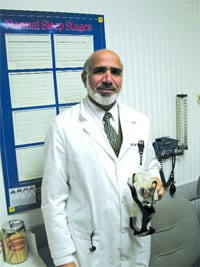Working Out the Details – National Safety Month Puts Focus on Reducing Risk
Observed annually in June, National Safety Month focuses on reducing leading causes of injury and death at work, on the road, and in the home and community. The National Safety Council (NSC) provides downloadable resources highlighting a different safety topic for each week in June. These include emergency preparedness, wellness, falls, and driving.
The workplace alone can be a minefield of preventable hazards. Nearly 13,000 American workers are injured each day, and most of those injuries are preventable. Here’s what the NSC is focusing on to keep workers safe.
Fatigue. Adults need seven to nine hours of sleep each day to reach peak performance, but nearly one-third report averaging less than six hours. The effects of fatigue are far-reaching and can have an adverse impact in all areas of life. Safety performance decreases as employees become tired, and drivers are three times more likely to be in a car crash if fatigued. Chronic sleep deprivation causes depression, obesity, cardiovascular disease, and other illnesses.
Drugs at work. Lost time, job turnover, retraining, and healthcare costs are some of the primary financial implications of drug use regularly confronted by employers. The typical worker with a substance-use disorder misses about two work weeks (10.5 days) for illness, injury, or reasons other than vacations and holidays. Workers with substance-use disorders miss 50{06cf2b9696b159f874511d23dbc893eb1ac83014175ed30550cfff22781411e5} more days than their peers, averaging 14.8 days a year. Meanwhile, workers with pain-medication-use disorders miss nearly double that total: 29 days.
Driving. Many employers have adopted safe-driving policies that include bans on cell-phone use while driving and on the job. NSC has created a Safe Driving Kit with materials to build leadership support for a cell-phone policy and tools to communicate with employees.
Workplace violence. Every year, 2 million American workers report having been victims of workplace violence. This violence fits into four categories: criminal intent, customer/client, worker-on-worker, and personal relationship (most involving women). The deadliest situations involve an active shooter. Every organization needs to address workplace violence through policy, training, and the development of emergency action plans.
Slips, trips, and falls. Falls account for the third-highest total of unintentional deaths every year in the U.S. Fatalities as a result of falls are surpassed only by poisoning (including deaths from drugs and medicines) and motor-vehicle crashes. Fall safety should be a top priority. Construction workers are at the most risk for fatal falls from height, but falls can happen anywhere, and it is important to recognize potential hazards, both on the job and off. Plan ahead and use the right equipment.
Ergonomics and overexertion. Overexertion causes 35{06cf2b9696b159f874511d23dbc893eb1ac83014175ed30550cfff22781411e5} of all work-related injuries and is the top reason for lost work days. Regular exercise, stretching, and strength training can prevent injury. Likewise, ergonomic assessments can ward off injuries often caused by excessive lifting, lowering, pushing, pulling, reaching, or stretching.
Being struck by objects. While employers are responsible for providing a safe work environment, employees can take steps to protect themselves at work. Paying attention is vitally important for those operating machinery as well as those working around power tools and motor vehicles.


